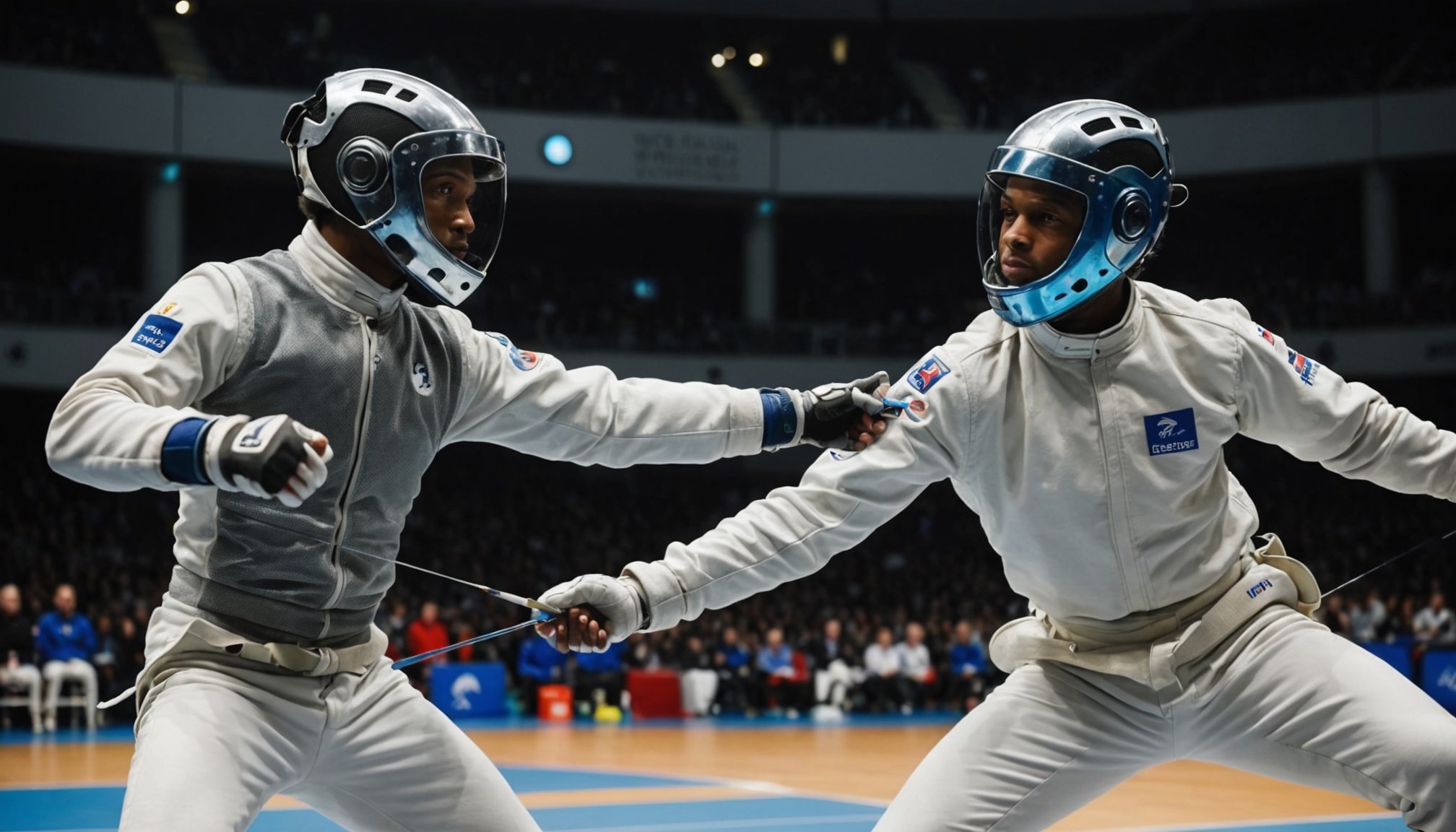Understanding Reaction Times in Fencing
In the intense world of fencing, where matches can shift in the blink of an eye, reaction times are a critical factor in competitive performance. Athletes with lightning-fast reflexes often gain an edge over opponents. This skill defines how quickly a fencer can respond to an opponent’s strike or adjust tactics mid-match.
Reaction times play a vital role in fencing techniques, shaping an athlete’s ability to execute precise and timely manoeuvres. The ability to interpret opponents’ intentions and react instantly is essential to maintaining competitive standards. This is why honing reaction times is a continuous focus for fencers, driven by both physical and mental training to enhance their overall performance.
Have you seen this : Mastering Explosive Strength: The Ultimate Plyometric Training Blueprint for Wrestlers in the UK
The link between mental acuity and physical reaction times is undeniable. Fencers regularly engage in exercises designed to sharpen cognitive functions, as this can directly translate to quicker, more effective physical responses. Drills that simulate live combat or utilise reaction-timing devices are frequently used to improve this symbiosis between mind and body.
Competitive performance is closely tied to how finely tuned an athlete’s reflexes are. Therefore, fencing training often involves specific activities aimed at speeding up reaction times, ensuring athletes are always one step ahead.
Also read : Harnessing Victory: How Visualization Strategies Boost Performance for UK Combat Athletes
Techniques Used by UK Fencing Athletes
Fencers in the UK employ a rich tapestry of fencing techniques and training methods to boost athlete performance. Drills act as the backbone of training, where athletes engage in repetitive actions to develop muscle memory vital for competitive settings. These drills not only help rehearse movements but also enhance reflex speed, a key determinant in high-stakes scenarios. For instance, acceleration and deceleration exercises train the body to adapt swiftly, mirroring real match conditions.
Incorporating technology in training has transformed how athletes polish their skills. Devices like reaction timers and sensors offer tangible feedback, enabling fencers to pinpoint areas needing improvement. Coupled with video analysis, athletes gain visual insights into their performance, allowing for strategic adjustments. This intersection of techniques and technology equips UK fencers with a scientific edge rare in traditional training programs.
Coaches are the architects behind these progressive training regimens. Through real-time feedback and custom-tailored strategies, they refine athlete reflexes meticulously. Successful coaching methods often involve personalized sessions that align with the individual fencers’ unique styles and strengths. Such resources and mentorship empower fencers to translate practice efficiency into effective competitive performance.
Scientific Approaches to Enhancing Reflexes
In the quest for reaction speed improvement, recent scientific studies offer groundbreaking insights. These studies highlight the critical role of cognitive training in augmenting a fencer’s reflex capabilities. By engaging in activities that boost mental processing speed, athletes can gain valuable milliseconds that might determine the outcome of a match. Experiments have also shed light on the neurophysiological factors underlying rapid responses. Understanding these components allows coaches to tailor training regimens more effectively.
Cognitive exercises, such as puzzles and memory tasks, have been proven to enhance both mental acuity and physical reaction times. These exercises condition the brain to efficiently process and respond to stimuli, enhancing overall fencing techniques. Moreover, integrating cognitive training with physical drills provides a dual-action approach that sharpens both mind and body.
The application of neurofeedback technology also shows promise. By offering real-time insight into brainwave activity, neurofeedback enables athletes to achieve an optimal mental state for peak performance. This scientific approach connects directly to competitive scenarios, where lightning-fast reflexes can spell the difference between victory and defeat, underscoring the importance of these advanced methodologies in the evolution of fencing training.
Real-Life Examples from UK Fencing Competitions
In UK fencing competitions, the symbiosis of competitive strategies and athlete insights reveals unexpected depths. Observing standout fencers like James-Andrew Davis, we see how tactical acumen and lightning-fast reaction times blend seamlessly. Davis’s approach in pivotal matches exemplifies how important split-second decisions are, creating a pattern that fellow fencers and aspirants strive to emulate.
Case Studies of Top Athletes
Take the gripping match between Davis and Richard Kruse during the European Championships. Their duel highlighted effective reaction-based techniques. Davis’s ability to anticipate moves—reacting not just with speed but with strategy—illustrates the utility of conditioning and intuition in a competitive arena. Such matches underscore the significance of combining training with quick-thinking skills.
Athlete Testimonials on Training Impact
Testimonials from UK fencers vividly communicate how training methods translate into competition success. As Davis notes, “The psychological edge you get from knowing your body can react instinctively is immense.” These personal experiences shed light on the inner workings of an athlete’s transformation from training to triumph and demonstrate the broader impacts of discipline and dedicated practice.
Recommendations for Aspiring Fencers
Upcoming fencers can benefit from focusing on not only fencing techniques but also agility and tactical intelligence. Engage in local clubs, leverage resources, and seek mentorship from seasoned athletes to expand your skill set and build a sustainable competitive advantage.
Conclusion: The Path to Turbocharged Reflexes
Continuing on the journey to turbocharged reflexes is crucial for achieving fencing excellence. It begins with a commitment to reflex training, focusing on both physical and cognitive aspects. This dual approach ensures comprehensive development, equipping fencers to handle the demands of high-paced matches effectively.
Continuous improvement is key. As sports science advances, novel techniques emerge, offering fresh perspectives on enhancing reaction times. Incorporating these insights into regular training helps athletes stay ahead of the competition. Exercises that integrate mental sharpness with physical agility are proving invaluable for fencers striving for excellence.
Dedication to regular practice cannot be overstated. Routine drills and engagement with new methodologies foster continual practice and adaptation—elements vital to refining one’s skills. Whether it’s through state-of-the-art technology or traditional drills, finding a balance that suits individual needs leads to consistent performance enhancement.
Fencers are encouraged to embrace a lifelong commitment to learning and improvement. This mindset not only helps them maintain peak performance levels but also nurtures a passion for the sport that fuels ongoing success. As athletes vigorously pursue opportunities for personal growth, they inch closer to mastering the art of fencing, achieving greatness in their competitive endeavors.




